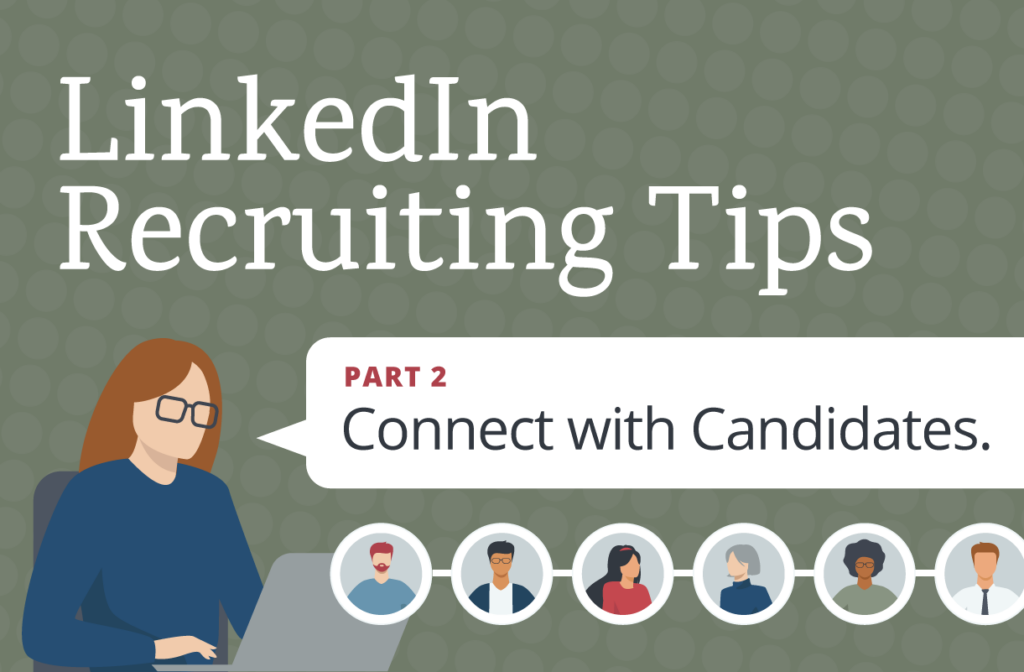Over the years, our data talent recruiting team here at Dataspace has honed our technique for finding and connecting with the best possible data science candidates to meet our client’s needs. As LinkedIn has grown and evolved as the primary space for online recruiting efforts, we have needed to develop platform-specific outreach strategies that are effective, economical, and in line with our company’s core values. Fortunately for us, we’ve developed a set of LinkedIn recruiting tips to follow that show that efficacy and integrity can, indeed, go hand in hand.
Our general philosophy for successful recruiting on LinkedIn can be summed up as follows:
Look at the candidate as a human, not just as a title or set of keywords.
All the other LinkedIn recruiting tips that follow are in line with this principle.
1. Read the candidate’s profile before reaching out.
This should be a given, but it’s so easy to start to skim a little too much when you’re trying to get through LinkedIn’s endless pool of candidates. It’s absolutely worth your time to slow down a bit and actually read. When your message demonstrates that you understand a candidate as an individual, you greatly increase the likelihood of a response.
Strong candidates are already bombarded with messages from recruiters. Automated outreach isn’t fooling anyone—it’s easy to tell these communications are being sent en masse to anyone with the right job title. In our experience, candidates appreciate a more personalized approach and can tell when someone has read their profile and been intentional about contacting them.
Reading the candidate profile fully benefits the recruiter’s bottom line as well. Even a premium LinkedIn account comes with a limited number of InMails, which are too precious to be wasted. Sometimes candidates include information that would rule them out for a particular job, such as “Only considering remote work.” or “Not interested in any roles in healthcare.” I have also seen candidates include a message like “Recruiters – make sure you include the word ‘penguin’ in your InMail message otherwise, I will assume you have not read my profile and will not respond to your message.”
An extra bit of care when reviewing a potential candidate’s profile is an important step toward ensuring that your outreach is not in vain.
2. Provide relevant info about the job in your message.
In your initial InMail to candidate, be sure to provide some of the most relevant info about the job, including industry, whether it is on-site or work from home, responsibilities and goals, etc. If at all possible, include the salary range. Candidates want to know if it is worth their time to investigate this role, and salary is probably the biggest deciding factor.
3. Be prepared to answer candidate questions.
If your InMail has done it’s job and piqued the interested of a strong candidate, they are going to have questions. Commonly, they’ll want to know about the size of the company, the size of the team, and the goals for the role. and, of course, a salary range, if you haven’t shared it. Be sure you are able to efficiently answer these types of questions when a candidate does respond. It’s a big red flag for candidates when a recruiter can’t answer basic questions quickly and accurately.
4. Maintain communication with interested candidates.
It’s surprising how often great candidates feel ghosted by recruiters. Don’t leave them uncertain of where things stand and what the next step is. Keep your candidates informed on how their application is progressing and any info about timelines you have available. This is a common curtesy that seems to get lost in digital recruiting. But it’s absolutely worth your effort to keep your candidates engaged in the hiring process.
Use LinkedIn to make real connections with real candidates.
Keeping the above tips in mind allows us to facilitate a good experience and always treat candidates respectfully. We’ve found that this approach sets us apart from many other recruiting firms and makes the strongest candidates more inclined to work with us.

